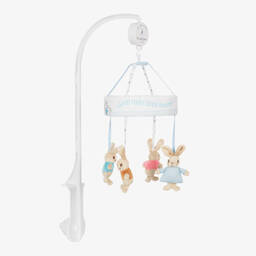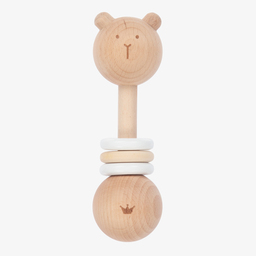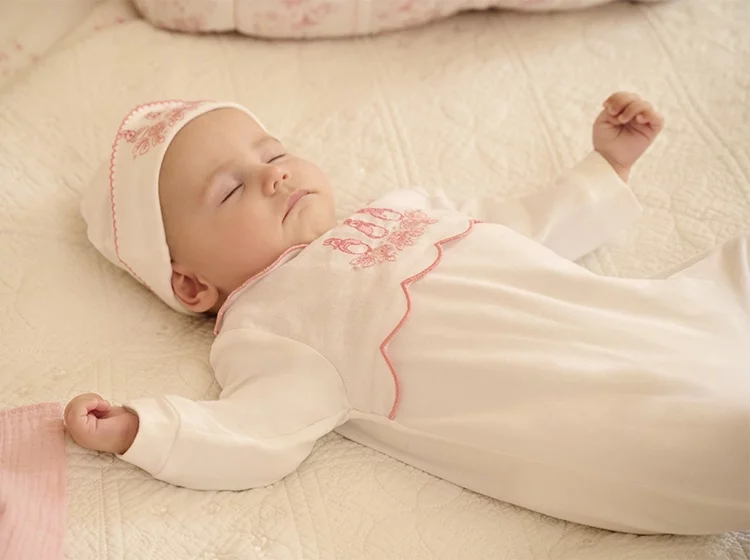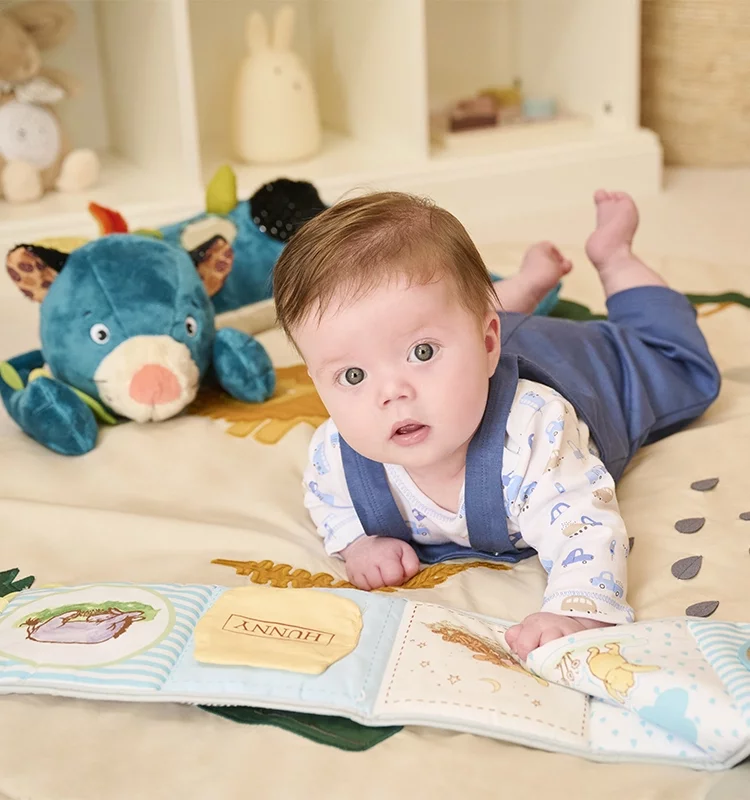
Sensory Toys for Babies
The world is a wonderful place, full of sights, sounds and interesting textures just waiting to be discovered. And from birth, your baby’s eyes, ears, nose and hands will be working overtime to make sense of their new surroundings. Amazingly, a baby’s sensory system starts to develop long before they are even born, as early as eight weeks gestation.
As soon as they're born, babies are like sponges, quickly and eagerly absorbing information from the environment around them. In fact, their five senses will develop at a faster rate in the first 12 months than in any other period. This is the perfect time to reinforce their fine motor skills through sensory play, so we've shared some of our favourite baby buys to keep your little one engaged from their very first days.
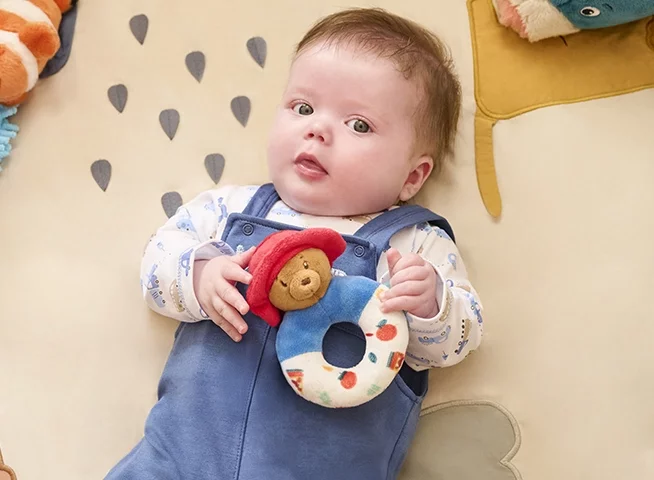
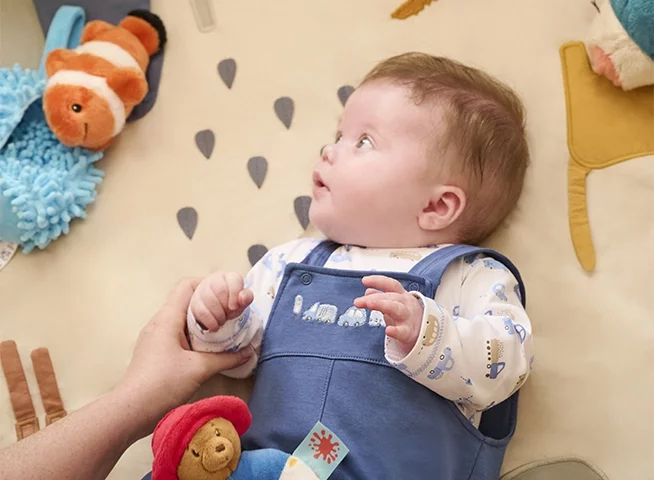
"I Spy with My Little Eye . . . "
High-contrast colours, bold shapes and wiggly lines; your baby is sure to be captivated by these sensory designs.
What your Baby Sees
When your beautiful bundle of joy arrives, they will see the world as a bit of a blur. However, as they begin to focus on close objects, their colour vision develops, and depth perception comes into play. And what better time to introduce interactive toys to their daily routine? Our collection of fabric books, playmats and toys is a great choice for early-days development. These clever designs not only provide a welcome distraction, but the high-contrast patterns are also created to help support the development of your baby’s vision.
"Hush, little baby . . ."
We’ve got sounds for soothing, sounds for playing, and sounds for every moment in between.
What your Baby Hears
Of your baby’s five senses, hearing is one that is fully developed by the time they are born. All those hours of singing and talking to your growing bump will have paid off and you’ll find that your child will be naturally soothed and responsive to your voice. There are four stages of auditory development — awareness, paying attention, responding and understanding meaning — and there are plenty of tools that you can utilise to reinforce these milestones. Playing music is a wonderful way to engage with and support a newborn’s cognitive development; it can create bonding moments whilst nursing, offer a welcome distraction during nappy changes, and provide an energising accompaniment to playtime. We love products like musical mobiles, which can be hung over their crib or changing table, or multi-sensory activity toys that your baby can squidge and shake to their heart's content.
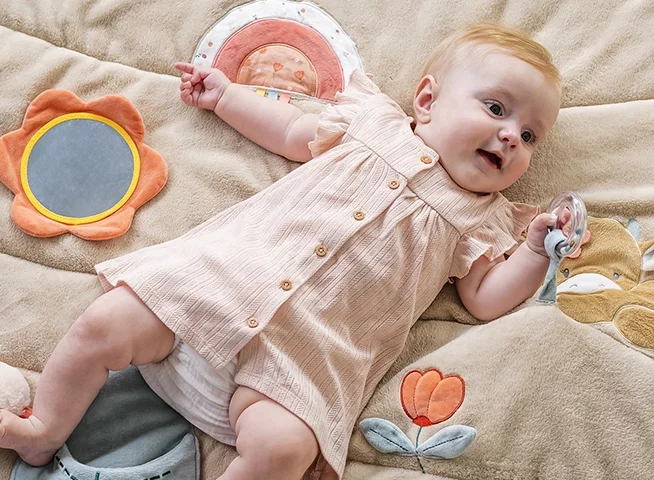
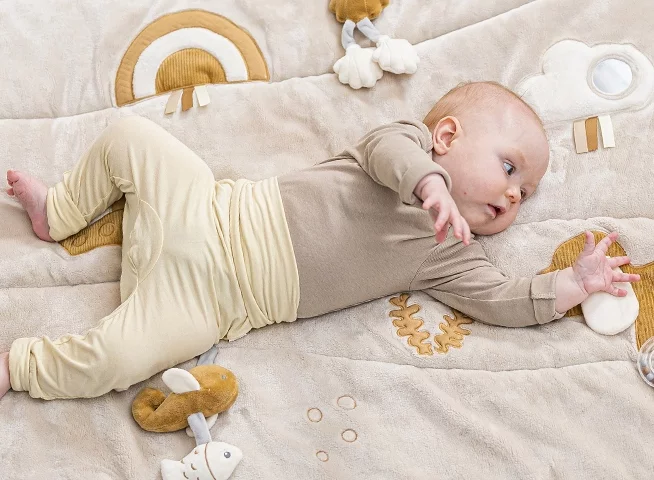
"Head, shoulders, knees and toes . . ."
The world is at their fingertips, and these tactile toys will ignite all of their senses.
What your Baby Feels
Whilst their vision is still a little fuzzy in those early weeks, your baby will start seeing the world through their fingertips. Tactility plays a major role in their development and helps in the formation of skills such as gripping and clapping. And from around 3 months old, they will be able to identify nearby objects and attempt to touch them, referred to as visually directed reaching. At this stage, they’ll likely be grabbing on to anything (and everything) — this is where a sensory toy comes in handy. Activity toys and rattles are a great idea for sensory playtime, especially designs that encourage hand-eye coordination and using both hands simultaneously. It takes practice to coordinate the dual function of both hands, so it’s a big step for tiny ones. This usually occurs at around 4 to 5 months old, so be prepared with a play cushion from Sophie la Girafe or a soft book from Rainbow Designs.
ㅤ
Images by Childrensalon





